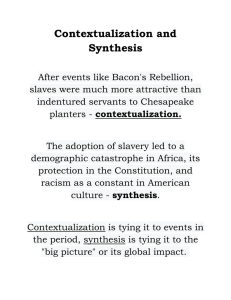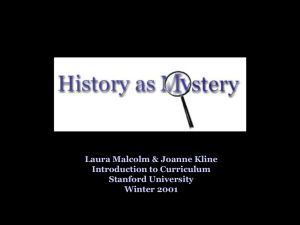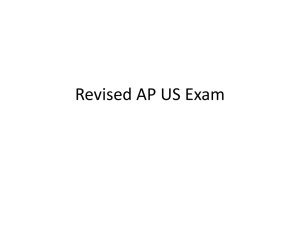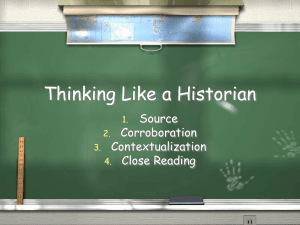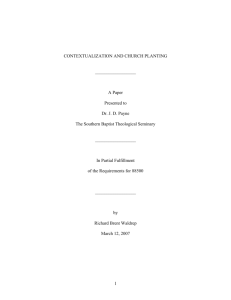Contextualization
advertisement
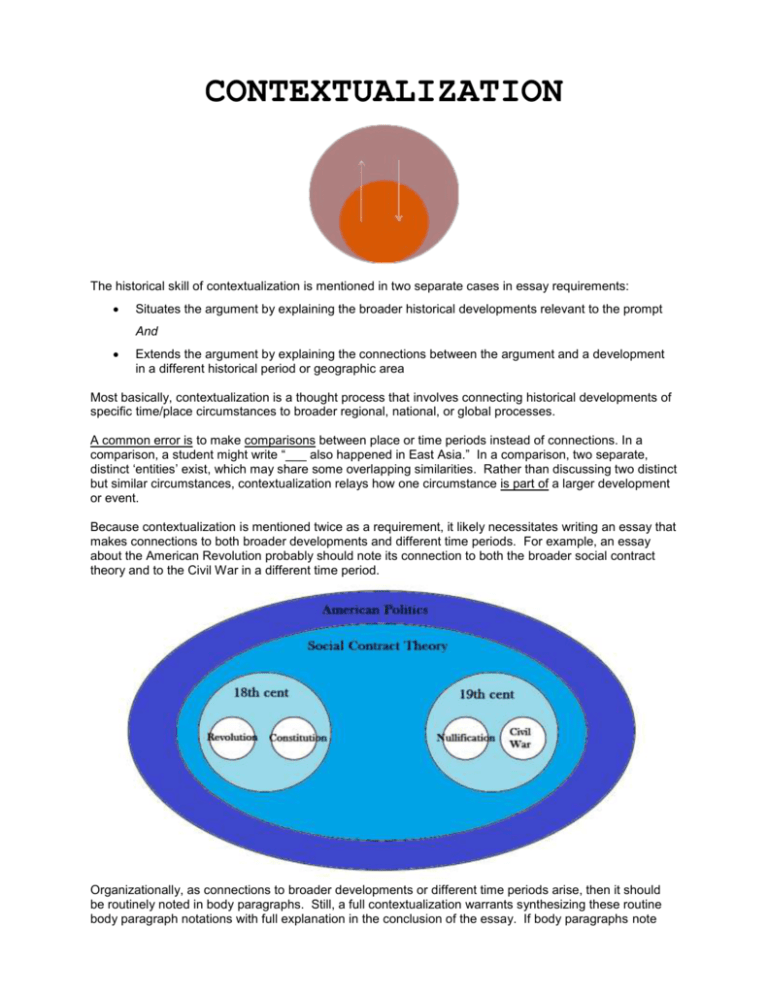
CONTEXTUALIZATION The historical skill of contextualization is mentioned in two separate cases in essay requirements: Situates the argument by explaining the broader historical developments relevant to the prompt And Extends the argument by explaining the connections between the argument and a development in a different historical period or geographic area Most basically, contextualization is a thought process that involves connecting historical developments of specific time/place circumstances to broader regional, national, or global processes. A common error is to make comparisons between place or time periods instead of connections. In a comparison, a student might write “___ also happened in East Asia.” In a comparison, two separate, distinct ‘entities’ exist, which may share some overlapping similarities. Rather than discussing two distinct but similar circumstances, contextualization relays how one circumstance is part of a larger development or event. Because contextualization is mentioned twice as a requirement, it likely necessitates writing an essay that makes connections to both broader developments and different time periods. For example, an essay about the American Revolution probably should note its connection to both the broader social contract theory and to the Civil War in a different time period. Organizationally, as connections to broader developments or different time periods arise, then it should be routinely noted in body paragraphs. Still, a full contextualization warrants synthesizing these routine body paragraph notations with full explanation in the conclusion of the essay. If body paragraphs note broader developments, then the conclusion paragraph should synthesize these broader contextualizations with connections to different time periods or geographic areas. However, if body paragraphs note different periods or geographic areas, then the conclusion paragraph should synthesize these contextualizations with connections to broader developments. Regardless of order, the follow up within the conclusion is critical because the AP rubric states: Contextualization is not awarded for merely a phrase or a reference, but instead requires an explanation, typically consisting of multiple sentences or a full paragraph. So, in summary, accurate world historical context must specifically explain how outside factors impacted the topic in question or how factors within the topic impacted broader developments and different periods. The analogy of a jigsaw puzzle is instructive. How does an individual piece relate to the surrounding pieces and relate to the larger picture as a whole.
